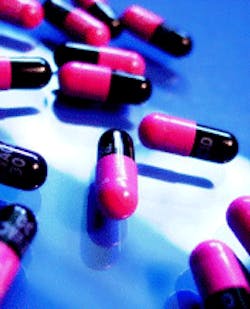What Happens to Pharmaceuticals in Wastewater?
With 45% of Americans taking at least one prescription drug, we flush away a constant flow of old and unused medications that keep on working after they disappear down drains, moving to wastewater-treatment plants and into waterways.
Take those transdermal birth-control patches. Only a small amount of the drug they contain, ethynyl estradiol, ever passes into the body; the rest remains in the patch as it heads to the sewer. At risk is the collapse of whole fish populations, as happened to fathead minnows in a Canadian test lake exposed for several years to ethynyl estradiol. Both males and females showed changes in sex organs that made reproduction difficult and drove them to near extinction, according to this May's Proceedings of the National Academy of Sciences.
Traditionally, as a safe, quick means of eliminating drugs, patients and pharmacists have been instructed to flush all old medications down the toilet. The troubles arise once medications reach sewage-treatment plants. "Removal rates can vary from almost zero to 100 percent, depending on the active pharmaceutical ingredient you're considering," says Christian Daughton, a scientist at the Environmental Protection Agency's National Exposure Research Laboratory. More sophisticated treatments can result in higher removal rates of drugs such as the antimicrobial triclocarban, but drugs that lodge in fats, such as the antibacterial triclosan, tend to go into sludge, and all drugs can end up in waterways to some extent.
That sludge may then be mixed in commercial soil amendments, with resultant drug levels in the parts per million, and used by farmers. In 2006, researchers at Eastern Washington University detected pharmaceuticals including anti-epileptics and anti-depressants in commercially sold sludge, and the U.S. Geological Survey, in a 2002 analysis of 139 streams, detected non-prescription drugs more frequently than almost all other organic wastewater contaminants. Moving full circle, pharmaceuticals have found their way into drinking-water supplies, including Montana well water and New Jersey tap water.
Unfortunately, what might seem like the most obvious choice, a drug take-back program, is fraught with legal problems. Although pharmacies can sell controlled substances such as narcotics, they can't take them back. This October, the U.S. Fish and Wildlife Service (FWS), in conjunction with the American Pharmacists Association, is beginning SMARxT DISPOSAL, a public outreach effort focused on proper drug disposal. In the long run, "we want to build the social will to create a national take-back program," says Joe Starinchak, coordinator for FWS's Fisheries and Habitat Conservation Program, but he notes that every state has different authorities that handle pharmaceuticals, creating "unbelievable" bureaucratic challenges. For now, the program emphasizes flushing only those medications that specifically state you do so. Others may be crushed and mixed with cat litter or coffee grounds before disposing in the trash can, but "consumers should be aware that the extra step incurs some risk, such as dropping a pill unknowingly on the floor," where pets or children might encounter it, Daughton says. A take-back program remains your best solution.
What You Can Do
• Don't hoard your excess drugs; dispose of them as soon as you no longer need them.
• Fold over birth-control patches and dump them in the garbage. Follow instructions where available for other medications, as certain drugs, such as the narcotic fentanyl, must be flushed to avoid posing a health threat.
Source: National Geographic, The Green Guide
